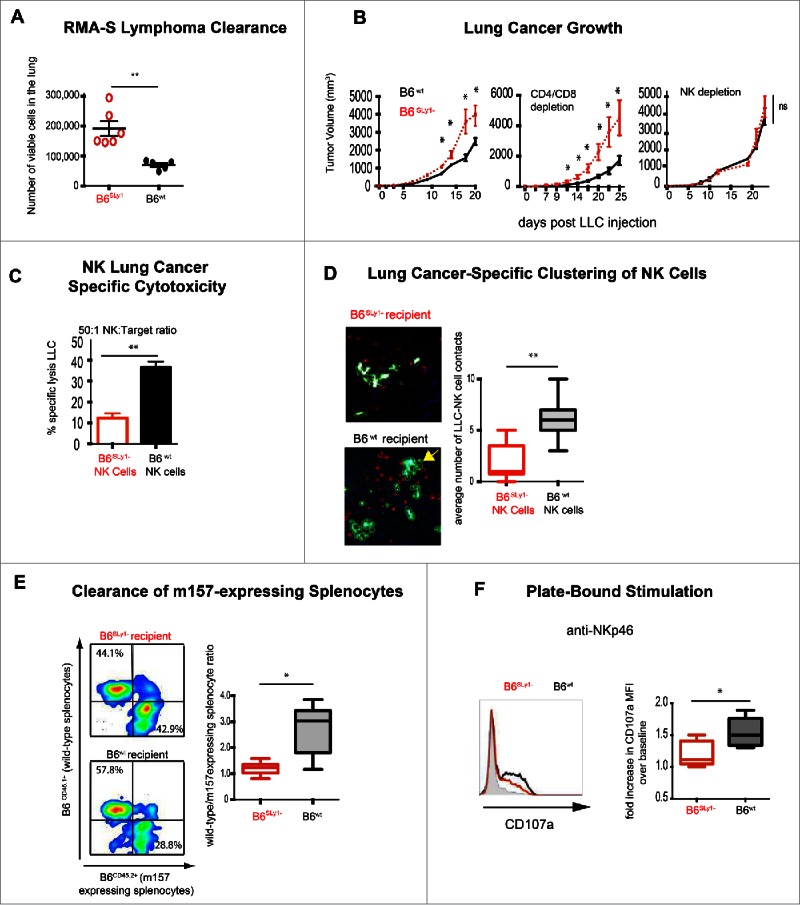Figure 2.

B6SLy1− NK cells demonstrate multiple functional defects. (A) Clearance of RMA lymphoma expressing the NKG2D ligand Rae-1 from lungs of B6wt or B6SLy1−mice 18 h after i.v. injection. Comparison performed by unpaired t-test. (B) Growth of LLC injected into the flank of B6SLy1− (red line) and B6wt mice (black line) in untreated mice (left), those depleted of CD4+ and CD8+ lymphocytes (middle) or NK1.1+ cells (right). Comparison performed by unpaired t-test at each time point. Isotype control-treated animals demonstrated tumor growth identical to unmanipulated mice (data not shown). (C) In vitro lysis of LLC at a 50:1 effector:target ratio. Data representative of four separate experiments with comparison performed by unpaired t-test. (D) Average number of durable contacts between B6SLy1− (top) and B6wt (bottom) NK (crossed to express tomato cherry red on NK1.1 promoter56) cells with GFP-expressing LLC injected into the lung. Yellow arrow points to 4 B6wt NK cells establishing contact with one tumor cell. Data representative of three separate mice per group with comparison performed by unpaired t-test. (E) In vivo clearance of CFSE labeled B6CD45.1+wild-type or B6CD45.2+m157-expressing splenocytes injected into B6SLy1− (top) and B6wt mice (bottom) recipient mice. Data derived from flow cytometric analysis of the spleen, demonstrating one representative experiment on the left and summary of five animals on the right compared by unpaired t-test. (F) Degranulation of B6SLy1−(red) and B6wt (black) NK cells after plate bound stimulation with NKp46 as measured by surface CD107a expression. Left panel representative of one experiment with heavy black line representative of Cd107a in B6wt NK cells after co-culture with plate bound NKp46 and heavy red line representative of B6SLy1− NK cells after co-culture with plate bound NKp46. Shaded black line representative of plate-bound isotype control. Comparison performed by unpaired t-test. Summary of five separate experiments. *p < 0.05, **p < 0.01, ns = p > 0.05.
